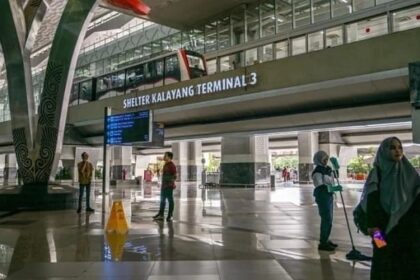A quiet eight minutes that sparked a policy debate
A routine pause at Otaru Station turned into a national talking point after a JR Hokkaido train driver was disciplined for reading a personal book while the train was stopped. The incident took place around 5 p.m. on 7 October, during a planned eight minute wait to allow an express train to pass. No delay occurred and no safety event was recorded, yet the company apologized to passengers and took the stance that the act fell short of the professional focus expected in the cab.
- A quiet eight minutes that sparked a policy debate
- What happened at Otaru Station
- Why a short break triggered discipline
- Heightened oversight of JR Hokkaido
- Discipline and culture in Japanese railways
- What passengers think
- How other railways handle downtime
- What comes next for JR Hokkaido and its staff
- Key Points
The response reflects the high bar set for rail operations in Japan, where precision and safety culture are the norm. It also reflects the close scrutiny now placed on JR Hokkaido by national regulators after earlier safety and maintenance problems. Many commuters and rail fans argued online that reading a book inside a stationary train should not be grounds for discipline. Others countered that rules exist for a reason and that full attention should remain on signals, platform activity, and the timetable, even during a planned wait.
The debate has spread beyond the specifics of one driver to a broader question: how railways should balance strict procedures with practical realities of the job, including fatigue, morale, and public trust. The case shows how a simple moment of downtime can collide with a culture built on vigilance and exact timing.
What happened at Otaru Station
The train involved was a local service scheduled to stand at Otaru Station for about eight minutes while an express passed on the line. During that pause, a passenger observed the driver reading a railway themed book in the cab and reported it. The driver later acknowledged reading during waits in the past when time allowed. The train departed on time, and the stop proceeded as planned without operational impact.
JR Hokkaido apologized for causing concern among passengers and said the conduct violated company expectations for on duty concentration. The railway signaled that it would handle the matter through its disciplinary process and would remind staff of standards that apply even when trains are stationary at platforms. The company also indicated that small lapses now receive firm attention as it works under closer oversight from authorities in charge of transport safety in Hokkaido.
Online conversations quickly took off. Many commenters sympathized with the driver and questioned why reading during a quiet pause would be harmful. Others stressed that a platform stop is part of the operating context, not a personal break, and that drivers need to maintain awareness for any unexpected change, platform activity, or signal update.
Why a short break triggered discipline
Drivers in Japan operate under detailed rules that treat even a station dwell as active duty. While a train waits, the person at the controls is still responsible for the train and must be ready to act. A set of core tasks continues during that interval. The driver monitors signal aspects and departure indications, tracks the timetable, watches the platform, and communicates when needed with crew or station staff. Company instructions typically prohibit personal reading, mobile phone use, or any unrelated activity in the cab while on duty.
From a management perspective, the goal is consistency. If a practice is allowed during one quiet pause, it can be hard to enforce a no distraction standard during a more complex stop. The rule is simple by design. Personal material is not handled in the cab while on duty. That standard aims to remove ambiguity and maintain focus in a setting where seconds matter and unexpected events can arise without warning.
Safety standards during station dwell
A station dwell is not idle time. The driver must confirm the signal, track the precise departure time, and be ready for last minute changes from dispatch, including priority moves for other trains. Station platforms are dynamic spaces. A person might break the safety line, a late passenger could try to board at the last moment, or station staff might signal a concern. Even with automatic platform doors at some stations, final checks and timing remain critical. A distraction in the cab can affect reaction time or cause a missed cue.
Supporters of the driver argue that a book used for a few minutes in a quiet platform setting is harmless. Their view is that workload varies during a planned wait, and a short mental reset can help morale. Railways, however, typically err on the side of a clean rule that bars any nonessential activity. That approach avoids grey areas and sets an expectation that what happens in the cab remains solely focused on operating the train.
Heightened oversight of JR Hokkaido
JR Hokkaido has been under closer watch by the national transport ministry and the Hokkaido Transport Bureau after past safety and maintenance issues. When a railway faces oversight and improvement orders, managers often apply strict compliance to even small matters of conduct. The aim is to demonstrate that procedures are followed without exception and that the company is actively addressing risk culture.
In this environment, acts that might once have been handled informally can trigger formal discipline. Management teams in such periods often roll out reminders, additional checks, and audits. The message to employees is that operations must reflect the rulebook in both large and small ways. The message to passengers is that the company is serious about regaining trust.
Discipline and culture in Japanese railways
Japan’s rail system is world famous for punctuality and attention to detail. That reputation rests on countless daily behaviors by frontline staff, from precise stop points to confirmation calls that keep eyes and hands aligned with procedures. Drivers and conductors follow checklists to reduce cognitive slips and to ensure that routine does not dull awareness.
At the same time, railways in Japan have navigated hard lessons about discipline practices. In the mid 2000s, managers at one major railway came under legal and public criticism for punitive approaches to staff errors, including tasks unrelated to rail operations that courts later deemed inappropriate. Investigations into a fatal derailment in 2005 highlighted how pressure to recover lost minutes and harsh re training traditions contributed to a damaging safety culture. Those findings pushed companies to rethink how discipline and training intersect with safety.
Past cases that shaped expectations
Courts later ordered compensation for workers who had been assigned demeaning tasks after minor lapses. The rulings made it clear that punishment that humiliates staff does not improve safety. From that period forward, the industry focus shifted toward structured training, risk reporting, and human factors awareness. Companies still require strict adherence to rules on duty. The difference is the emphasis on fair process and on outcomes that genuinely reduce risk rather than simply assigning blame.
The Otaru case sits inside that history. JR Hokkaido has to show that its standards are enforced. It also has to avoid sliding back into a culture where discipline is about optics rather than learning. The most effective approach addresses the behavior, explains the safety rationale, and supports the workforce with clear guidance that reduces fatigue and ambiguity during daily operations.
What passengers think
Public reaction split into two broad camps. One group viewed the act as human and harmless. People in this camp argued that if the timetable required an eight minute wait and nothing operational was happening, a short glance at a book hurts no one. Many expressed frustration that a customer complaint over a quiet moment prompted a formal reprimand.
Another group focused on the role, not the pause. To them, reading in the cab while on duty undercuts the message of vigilance that passengers expect. They argued that it is hard to know from the platform when a brief distraction could cause a missed signal or a rushed departure. In their view, the clarity of the rule matters more than the circumstance of the day.
The tone of the online debate showed how much trust riders place in the system. Small events can feel symbolic when commuters depend on trains to run to the second. Riders also carry memories of past incidents and media coverage of safety lapses, which can magnify concern over behaviors that seem casual inside the cab.
How other railways handle downtime
Rail operators around the world set strict expectations for distraction free cabs. Many commuter and intercity railroads prohibit personal devices and reading material in the control area while on duty. The logic mirrors aviation’s sterile cockpit rule at critical phases of flight. When an operator is responsible for a heavy vehicle in a public space, even when stationary, the safest default is to remove distractions.
Policies can differ in detail. Some railways allow personal activities only when the operator has officially handed over control and is on a break away from the vehicle. Others permit no personal activity in the cab at any time during a shift. Where trains run with tight headways and busy platforms, managers tend to favor the stricter versions. Those align with legal and insurance expectations and with public perceptions of what professionalism looks like in the cab.
Comparisons also highlight the role of fatigue management. High quality rest facilities, predictable rosters, and access to lounges during layovers help staff stay alert without resorting to personal distractions while on duty. Where those supports are strong, enforcement of distraction rules is easier to accept because staff have clear pathways to rest properly between tasks.
What comes next for JR Hokkaido and its staff
The company has already apologized and said it will address the matter as a breach of duty. Steps that typically follow include a reminder of rules to all drivers and conductors, targeted training on expectations during station dwells, and checks by supervisors during platform stops. These actions feed a consistent message that even during planned waits, the cab remains an operational environment.
This moment also provides an opportunity to refine guidance in a practical way. Clear examples reduce confusion. Staff need to know what counts as acceptable, such as reviewing a timetable or consulting operational notices, and what does not, such as personal reading or phone use. Managers can back this up by ensuring crews have adequate access to rest between runs. That balance supports vigilance without making the job feel punitive.
Passenger communication can help too. A short public note explaining that drivers must remain focused at platforms and what that entails can turn a controversy into a teachable moment. People tend to accept strict standards when they understand the safety logic behind them. Openness about oversight and progress since earlier safety problems can also build confidence.
For the driver involved, the most likely outcome is a formal warning and a record of the violation. In some cases companies add coaching or limited re training. Heavy penalties are rare for a first event without operational impact, though the level of oversight in Hokkaido could influence the response. What matters to riders is that the railway applies the rule fairly, communicates the reason, and keeps trains safe and punctual.
Key Points
- JR Hokkaido disciplined a driver who read a book during a planned eight minute stop at Otaru Station on 7 October.
- No delay or safety incident occurred, but the company apologized and said the act violated on duty focus rules.
- The driver acknowledged reading during waits before, which highlighted a gap between personal habit and policy.
- JR Hokkaido faces close oversight after earlier safety and maintenance issues, increasing sensitivity to any rule breach.
- Industry standards treat station dwells as active duty, with drivers expected to monitor signals, platform activity, and time.
- Public reaction split between support for the driver and support for strict professionalism in the cab.
- Global rail practice also prohibits personal distractions in the control area while on duty, similar in spirit to the sterile cockpit concept in aviation.
- Likely next steps include company wide reminders, training on dwell procedures, and continued focus on both rule clarity and fatigue management.












